IE 11 is not supported. For an optimal experience visit our site on another browser.
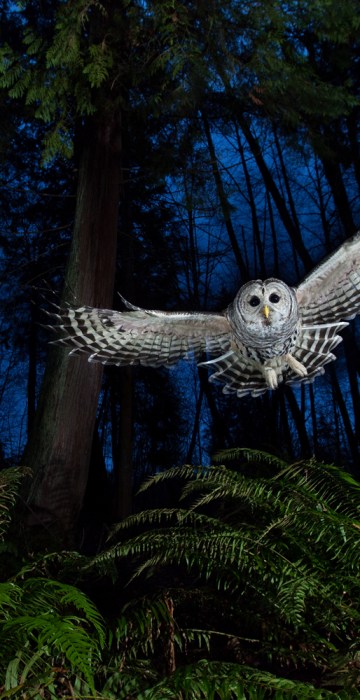
Science News
Wildlife Photographer of the Year 2013
Get a picture-perfect peek at a night owl, a troop of elephants and other creatures captured by winners of the 2013 Wildlife Photographer of the Year Competition.
/ 10 PHOTOS

The flight path
The flight path, Connor Stefanison (Canada)
Winner: The Eric Hosing Portfolio Award
Connor's photography draws on the wilderness skills he acquired over a childhood spent largely outdoors. This female barred owl had a territory near his home in Burnaby, British Columbia. He watched her for some time, familiarizing himself with her flight paths until he knew her well enough to set up the shot. \"I wanted to include the western red cedar and the sword ferns so typical of this Pacific coastal rainforest.\" Setting up his camera near one of the owl's favorite perches, linked to a remote and three off-camera flashes, he put a dead mouse on a platform above the camera and waited for the swoop that he knew would come. \"She grabbed the mouse, flew back to her perch and began calling to her mate. It is one of the most exciting calls to hear in the wild.\"
— ©Connor Stefanison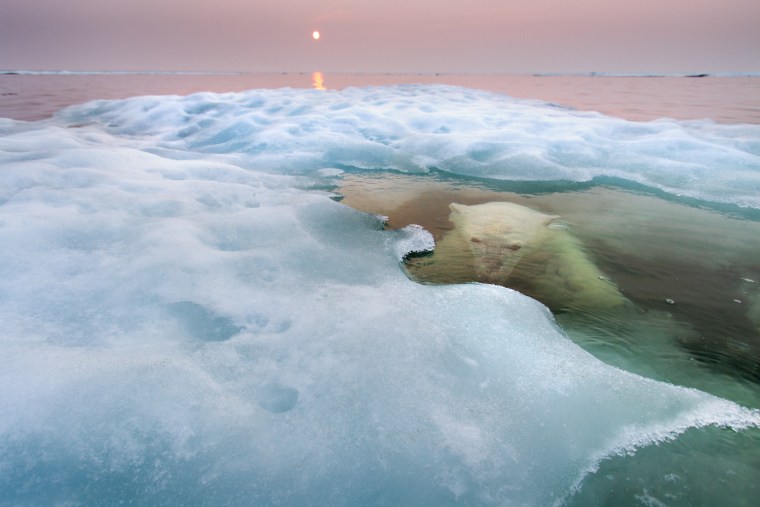
The water bear
The water bear, Paul Souder (USA)
Winner: Animals in Their Environment
The fact that most images of polar bears show them on land or ice says more about the practical difficulties faced by humans than it does about the bears' behavior. With adaptations such as thick blubber and nostrils that close, polar bears, are, in fact, highly aquatic, and they spend most of their time hunting seals on sea ice and are capable of swimming for hours at a time. Paul took his Zodiac boat to Hudson Bay, Canada, in midsummer to rectifiy this bias. He scouted for three days before he spotted a bear, this young female, on sea ice some 30 miles offshore. \"I approached her very, very slowly, \" he says, \" and then drifted. It was a cat-and-mouse game.\" When the bear slipped into the water, he just waited. \"There was just a flat, world of water and ice and this polar bear swimming lazily aorund me. I could hear her slow, regular breathing as she watched me below the surface or the exahaltion as she surfaced,
— Paul Souders | Worldfoto / WorldFoto, 2223 NW 60th Street,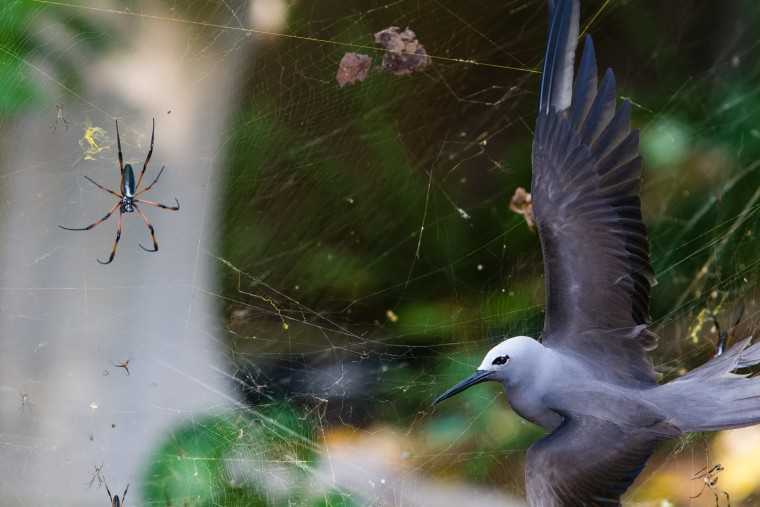
Sticky situation
Sticky situation, Isak Pretorius (South Africa)
Winner: Behavior: Birds
In May, the seafaring lesser noddies head for land to breed. Their arrival on the tinu island of Cousine in the Seychelles coincides with peak web size for the red-legged golden orb-web spiders. The female spiders, which can grow to the size of a hand, create colossal conjoined webs up to 5 feet in diameter in which the tiny males gather. These are woven from extremely strong silk and are suspended up to 20 feet above the ground, high enough to catch passing bats and birds, though it's flying insects that the spiders are after. Noddiers regularly fly into the webs. Even if they struggle free, the silk clogs up their feathers so they can't fly. This noddy was exhausted, says Isak, \"totally still, its fragile wing so fully stretched that I could see every feather.\" The only way to accentuate the female spider was to crop the wings. And it was only human intervention that saved the bird. But a stickier threat awaited it on the same
— 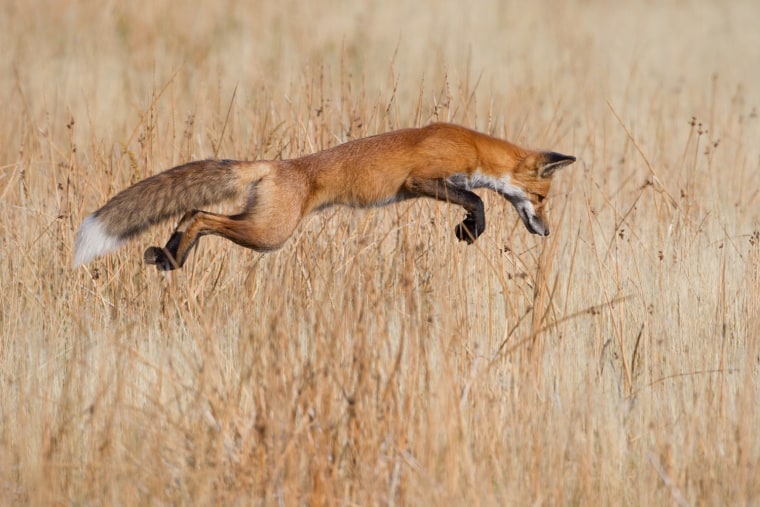
Lucky pounce
Lucky pounce, Connor Stefanison (Canada)
Winner: The Eric Hosking Portfolio Award
\"Anticipating the pounce -- that was the hardest part, \" says Connor, who had come to Yellowstone National Park in Wyoming in search of wildlife as much as the spectacular landscape. He had found this fox, his first ever, on his last day in the park. It was so absorbed in hunting that Connor had plenty of time to get out of the car and settle behind a rock. It quartered the grassland, back and forth, and then started staring intenly at a patch of ground, giving Connor just enough warning of the action to come. When it sprung up, Connor got this shot. And when it landed, the fox got his mouse.
— Connor Stefanison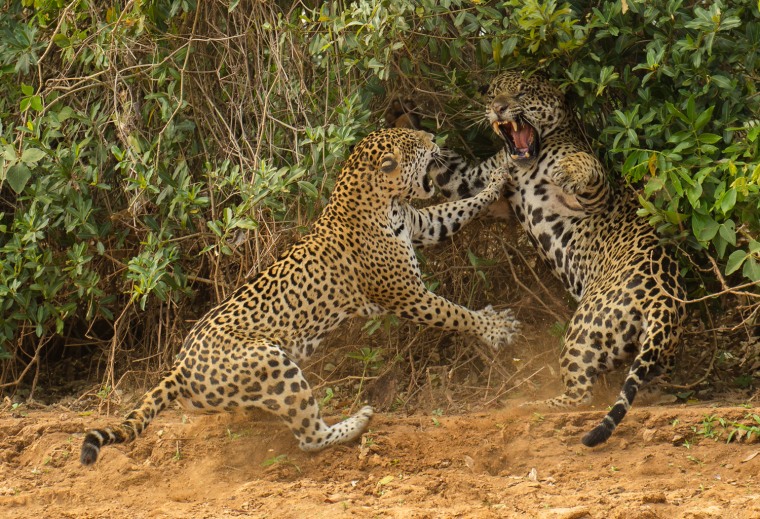
The spat
The spat, Joe McDonald (USA)
Winner: Behavior: Mammals
For several hours, the noisy sounds of courtship and mating were all Joe was treated to as he sat, sweltering in the hot sun, in a boat on the Three Brothers River in Brazi's Pantanal. So when the female jaguar finally emerged from the undergrowth and walked down to the river to drink, Joe was grateful for the photo opportunity. But that was just a start. After slaking her thirst, the female flpped down on the sand. Then the male appeared. After drinking and scent-marking, he approached the female, who was lying in what appeared to be a pose of enticement. At least, that's what both Joe and the male thought. She rose, growled and suddenly charged, slamming the male back as he reared up to avoid her outstretched claws. His own claws were sheathed. \"I couldn't believe the energy and intensity of those three seconds,\" says Joe. The pair then disappeared into the undergrowth to resume their courtship, leaving Joe with a sense of awe and a rare, winn
— Joe Mcdonald Joe Mcdonald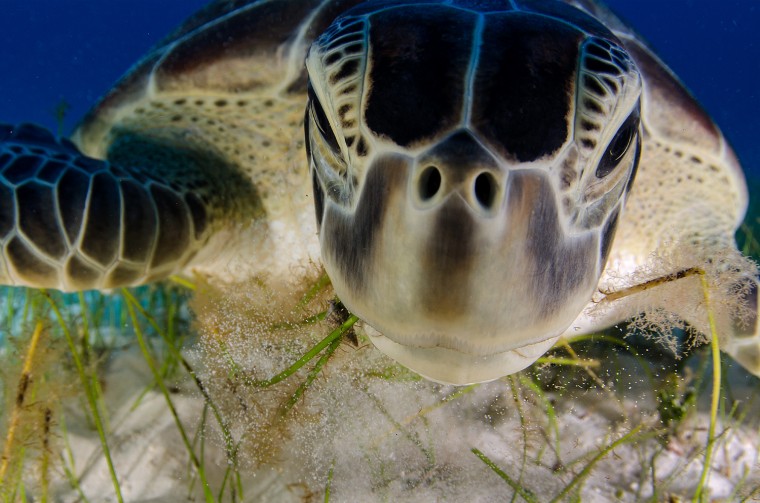
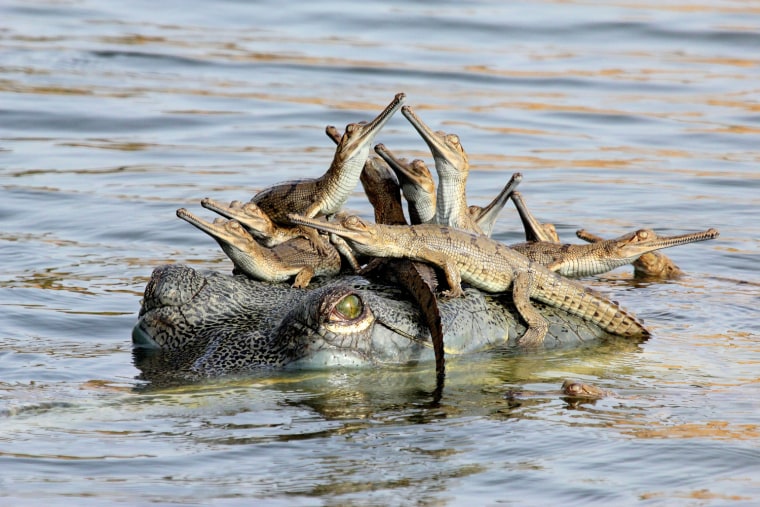
Mother's little headful
Mother's little headful, Udayan Rao Pawar (India)
Winner: Young Wildlife Photographer of the Year
One night Udayan camped near a nesting colony of gharials on the banks of the Chambal River -- two groups of them, each with more than 100 hatchlings. Before daybreak, he crept down and hid behind rocks beside the babies. \"I could hear them making little grunting sounds,\" says Udayan. \"Very soon a large female surfaced near the shore, checking on her charges. Some of the hatchlings swam to her and climbed onto her head. Perhaps it made them feel safe.\" It turned out that she was the chief female of the group, looking after all the hatchilings. Though he saw a few more females and a male, they never came close. Gharials were once found in rivers all over the Indian subcontinent. Today, just 2000 or so breeding adults remain in just 2 percent of the former range. \"The Chambal River is the gharial's last stronghold,\" says Udayan, \"but it is threatened by illegal sand-mining and fishing.\"
— 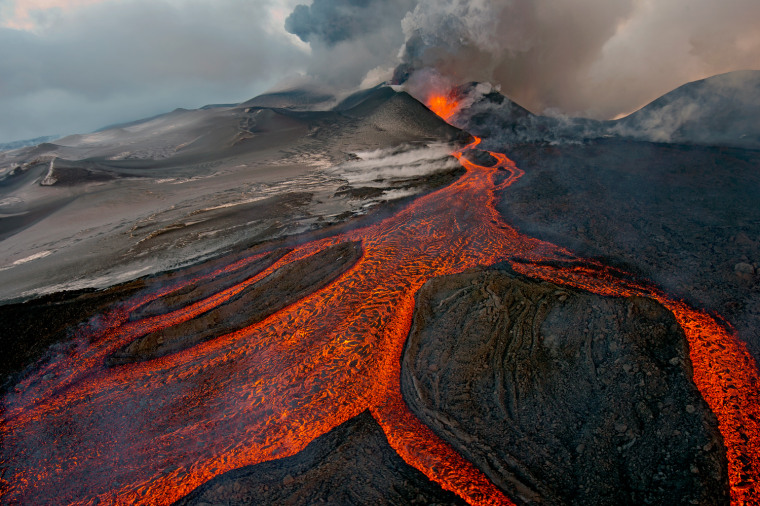
The cauldron
The cauldron, Sergey Gorshkov (Russia)
Winner: Wildscapes
On Nov. 29, 2012, Sergey received the call that he had long hoped for. Plosky Tolbachik--one of two vocanoes in the Tolbachik volcanic plateau in central Kamchatka, Russia--had begun to erupt. \"I've gone to the area many times, but it had been 36 years since the last eruption,\" he says. \"so I dropped everything and went.\" The only way to approach it was by helicopter, but extreme cold (-40 degrees Fahrenheit) meant Sergey had to wait until it was warm enough for the helicopter to take off. Flying towards the volcano, the cloud of ash, smoke and steam was so thick that he couldn't see the crater. But every so often, a strong wind blew the clouds away, and he could see a 700-foot-high fountain of lava spouting out of the crater and fast-flowing, molten rivers of lava running down it (some of these would travel 6 miles, sweeping away everything in their path.) As gusts of hot air buffeted the helicopter, Sergey worked fast, st
— Sergey Gorshkov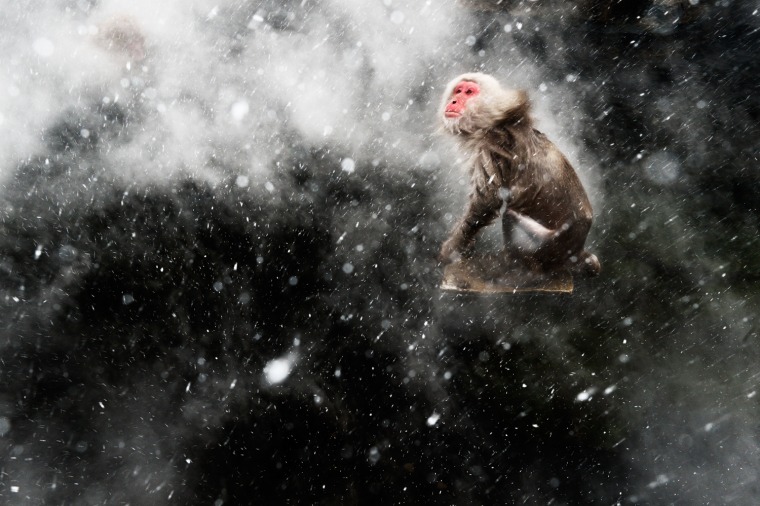
Snow moment
Snow moment, Jasper Doest (The Netherlands)
Winner: Creative Visions
When photogrpahing the famous Japancese macaques around the hot springs of Jigokudani, central Japan, jasper had become fascinated by the surreal effects created by the arrival of a cold wind. Occasionally, a blast would blow through the steam rising off the pools. If it was snowing, the result would be a mesmerizing pattern of swirling steam and snowflakes, which would whirl around any macaques warming up in the pools. But capturing the moment required total luck -- for Jasper to be there when the wind bleow and for the monkeys to be in the pool. For that luck to arrive, he had to wait another year. Returning the next winter, he determined to get the shot he'd been obsessing aobut. \"As it kept snowing, I stood there, willing the wind to pick up. I felt it just had to happen -- sometimes you can push your luck if you just wait long enought. \" But as the steam started whirling above the water, there wasn't a monkey in sigh
— Jasper Doest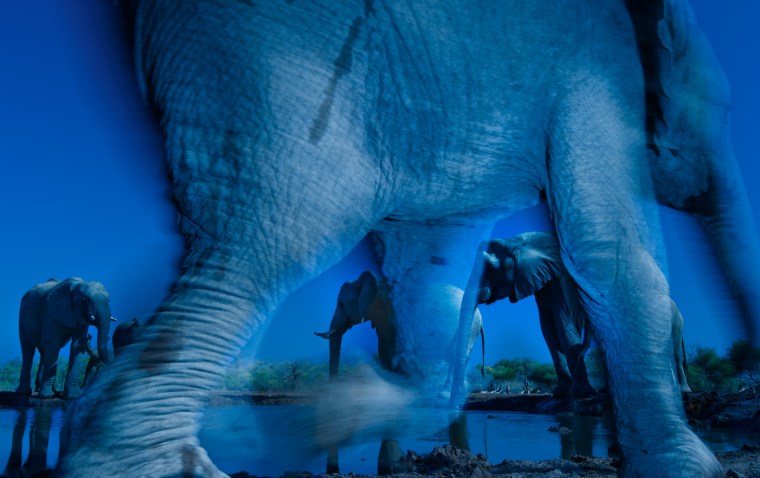
Essence of elephants
Essence of elephants, Greg du Toit of South Africa
Wildlife photographer of the year
Ever since he first picked up a camera, Greg has photographed AFrican elephants. \"For many years,\" he says, \"I've wanted to create an image that captures their special energy and the state of consciousness that I sense when I'm with them. This image comes closest to doing that.\" The shot was taken at a waterhole in Botswana's Northern Tuli Game Reserve, from a hide (a sunken freight container), that provided a ground-level view. Greg chose to use a slow shutter speed to create the atmosphere he was after and try \"to depict these gentle giants in an almost ghostly way.\"
— Greg Du Toit1/10